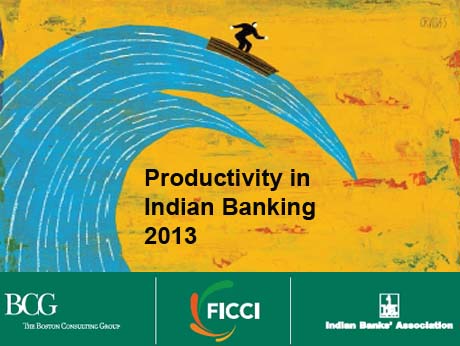
Mumbai, August 12, 2013: Indian banks have garnered high appreciation from their corporate clients for quality or relationship management, branch distribution and flexibility. But they have also been told that they need to pull up their socks when it comes to operations quality viz. turnaround time, exception handling etc. This is attributed to the poor IT expenditure of Indian banks which at 2% of revenue is among lowest in the world.
These are findings of the Boston Consulting Group (BCG), which has released a report titled "Consistency, Quality and Resilience: The Next Frontier for Productivity Excellence" on the eve of the at annual FICCI & IBA Banking Conference (FIBAC 2013) with the theme“Productivity excellence in Indian banking”. The report has been prepared with extensive research including surveys, conducted jointly with FICCI and Indian Banks Association, of over 500 corporate customers and analysis of data obtained from 38 of the largest banks in the country.
Salient points of the FIBAC 2013 report:
· For every 1 customer facing person, Indian banks have 1.2 non customer facing persons. This should be less than half of this level (i.e. for every customer facing person, less than 0.5 non customer facing person).
· Lenders do not get lion's share of wallet; transaction bank does: The primary banks for corporate is the one who provides the main current account. Public sector is primary lender; it is not a primary transaction bank
· Public sector has disproportionate exposure to traditional capital intensive industries
· Gold based lending by banks could help double the agriculture credit in India profitably. Rs 4.2 trillion of additional credit possible in direct agri lending using gold as collateral
· Banks paying heavy price for ignoring information analytics and IT based credit management Banks sit on massive data regarding customer transactions in core banking systems. This can be leveraged for early warning systems
· Despite introduction of digital channels, Indian bank branches are 10% more cluttered in 2013 compared to 2011. Banks need a fresh look at branch formats with more self–service and new technology based formats. Digital adoption needs greater push as banks move into semi urban and rural areas
· Electronic Point of Sale (POS) transactions a major weakness of Indian banking. Share of POS transactions in total digital transactions remained flat between 2011 and 2013. Public sector has virtually abdicated its role in extension of card acceptance in merchant establishments. Penetration of POS acceptance very low in India. Banks need to take advantage of new technology and services from National Payment Corporation of India (NPCI) like RuPay and IMPS
· Private Sector hit a plateau in digital adoption; PSU banks did 4 times better between FY '11 and FY '13. 15% improvement in digital adoption in private sector banks as against 60% for public sector banks between 2011 and 2013.Digital adoption defined as ratio of digital transactions to non digital transactions (cash and cheque). Digital adoption ratio in Private banks up to 2.3 in 2013 from 2 in 2011; PSU banks up to 1.6 in 2013 from 1 in 2011. Private sector banks need fresh thinking to move the needle in digital
Mr K R Kamath, Chairman, Indian Banks' Association (IBA) and Chairman and Managing Director, Punjab National Bank (PNB) speaking on the occasion of curtain raiser for the event said that "These are interesting times for Indian banking industry. We have significant challenges and lots of exciting opportunities. Indian banking industry will come out stronger through this phase of its evolution".
Mrs V R Iyer, Chairperson of FICCI’s Banking and Financial Institutions Committee and Chairperson and Managing Director of Bank of India said on the occasion that "Indian corporate clients have given a strong positive endorsement to Indian banks and have highlighted issues on operations and technology that we need to look at carefully".